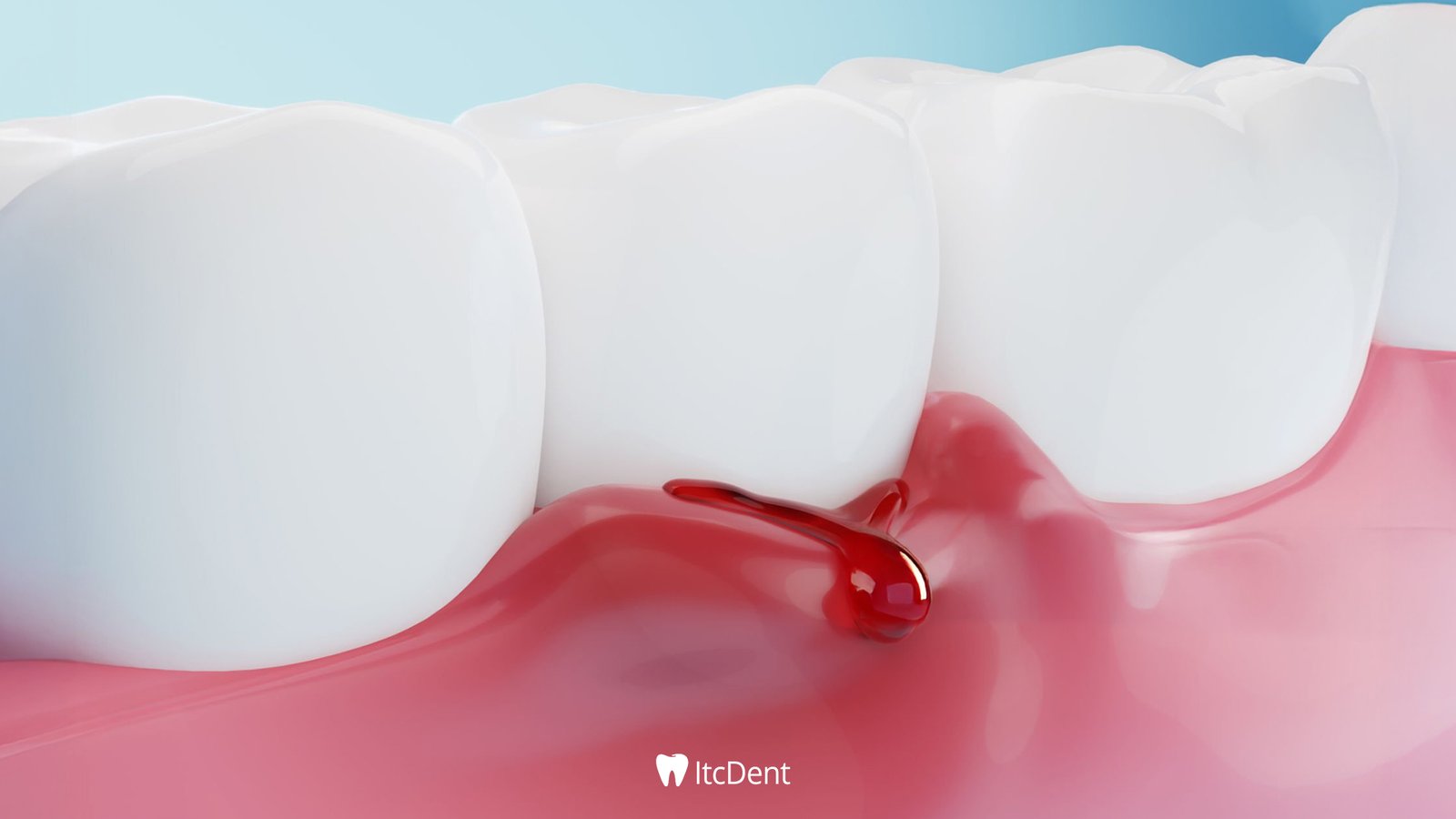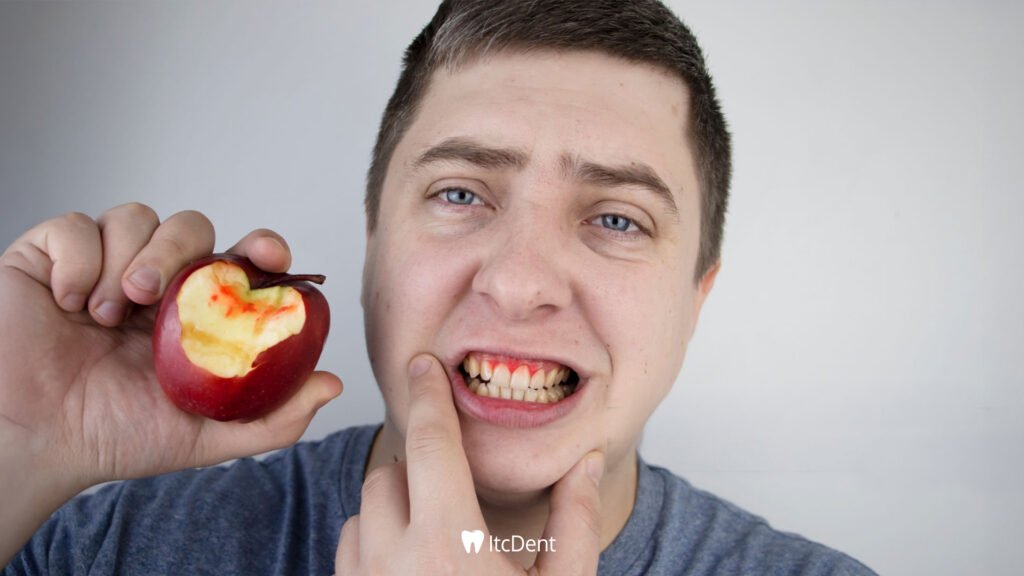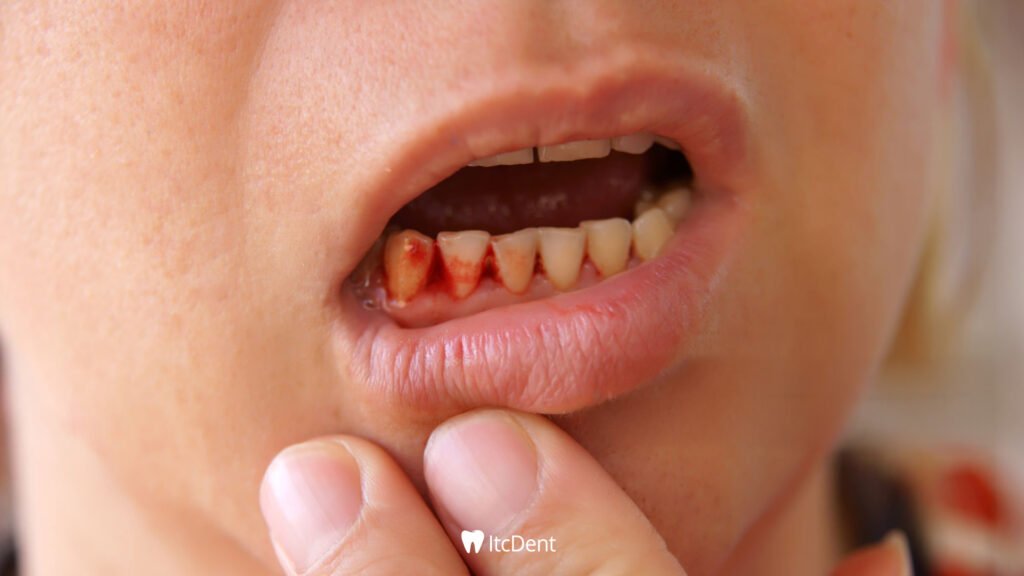
Bleeding gums are a common problem that many people encounter at least once in their lives, are often underestimated, but actually provide important clues about the course of their oral health. This bleeding, which is especially noticed while brushing or flossing, may seem like a temporary sensitivity at first, but the underlying causes may be more serious. Many people ignore this condition, thinking it will pass over time or trying to solve it by changing their brushing technique. However, bleeding gums can be a sign of a series of problems that start from deficiencies in oral hygiene and extend to gum diseases and systemic disorders.
There may be days when we neglect to brush our teeth in the hustle and bustle of daily life; however, oral health is an area that cannot be neglected. Bleeding gums are one of the first signals of this neglect. Therefore, seeing bleeding gums as just a “minor problem” means ignoring bigger problems that we may encounter in the future. It should not be forgotten that healthy teeth are possible with healthy gums.
What is Bleeding Gums?
Bleeding gums usually occur as a result of inflammation in the gums. Healthy gums are usually pale pink, firm and do not hurt when touched. However, this changes when inflammation occurs. The gums become red, swollen and sensitive. This sensitivity can cause bleeding even during daily oral care routines such as brushing your teeth. Some people even notice that they experience bleeding gums even when eating or talking.
Many people do not care about bleeding gums at first. They dismiss it by attributing it to the hardness of the toothbrush or applying too much pressure. However, if this condition recurs or becomes increasingly severe, it should definitely be taken into consideration. Because bleeding gums may not be a simple sensitivity. On the contrary, it can be one of the earliest signs of gum disease – especially gingivitis (gum inflammation) and periodontitis (advanced gum disease).
This problem can affect not only oral health but also general health. Studies show that untreated gum disease can be associated with many health problems, from heart disease to diabetes. For this reason, gum bleeding should not be seen as just a “cleaning problem” or a temporary condition.

Causes of Bleeding Gums
Gingivitis (Inflammation of the Gum)
The most common cause of bleeding gums is gingivitis. This condition occurs when bacterial plaque accumulates on the tooth surfaces and causes inflammation over time. Plaque is a sticky, colorless layer formed by food residue and bacteria accumulated in the mouth. If daily oral hygiene is neglected, these plaques harden and turn into tartar, causing inflammation of the gums. Inflamed gums swell, become sensitive and begin to bleed even at the slightest contact. If not treated early, gingivitis progresses and paves the way for more serious problems.
Periodontitis (Advanced Gum Disease)
If gingivitis is not treated, it can turn into a more serious gum disease called periodontitis over time. In this disease, not only the gums but also the bone tissue surrounding the teeth begin to be damaged. The gums recede, the teeth begin to loosen and in the worst case scenario, tooth loss may occur. Bleeding gums are a common symptom at this stage. At the same time, symptoms such as bad breath, gum recession and gaps between teeth accompany the picture. As periodontitis progresses, treatment becomes more complex and troublesome.
Wrong Brushing Technique
Many people think that the harder they brush their teeth, the cleaner they will be. However, this is a very common misconception. Brushing with hard-bristled brushes or applying too much pressure can damage the gums, which can cause bleeding. Brushing your teeth should be effective but gentle. Using soft or medium-hard brushes and brushing with circular, light movements is much more appropriate in terms of protecting your gums.
Floss Usage Errors
When flossing is applied with the right technique, it is extremely beneficial for oral hygiene. However, pressing the floss into the gums suddenly and harshly can cause bleeding, especially in people who are not used to this practice. This incorrect use can cause irritation even in healthy gums. Therefore, floss should be used gently, placed slowly between each tooth, grasped in a C shape and moved up and down.
Inadequate Oral Hygiene
Plaque and tartar buildup is more intense on teeth that are not brushed regularly. Over time, this buildup becomes a suitable habitat for bacteria and paves the way for gingivitis. This situation can get worse when additional cleaning steps such as flossing and gargling are neglected. As a result, the gums weaken, swell and begin to bleed. It is very important to create a comprehensive cleaning routine that covers not only the teeth but also the gums for a healthy mouth.

Smoking
Smoking is a habit that has extremely negative effects on oral and dental health. The harmful substances it contains prevent the gums from being fed with oxygen and slow down the healing process. It also suppresses the immune system and weakens the body’s defenses against inflammation. For this reason, gum diseases are more common in individuals who smoke and their treatment processes take longer. Bleeding can be one of the early symptoms of this disease.
Vitamin Deficiencies
Gum health depends not only on oral hygiene, but also on the body’s general nutritional status. Vitamin C deficiency, in particular, is one of the most common causes of bleeding gums. Vitamin C plays a critical role in maintaining the health of connective tissues, and when it is deficient, the gums weaken and bleed more easily. In addition, vitamin K deficiency can affect blood clotting and cause similar results. A balanced diet is an important step in preventing such problems.
Pregnancy and Hormonal Changes
Hormonal changes in the body during pregnancy can cause the gums to become more sensitive and prone to inflammation. This is especially evident in the second trimester of pregnancy. Swelling, tenderness and bleeding in the gums are common. This is often referred to as “pregnancy gingivitis.” Taking extra care of your gum health during this period is extremely important for the health of both the mother and the baby.
Symptoms of Bleeding Gums
Bleeding gums are usually noticed during brushing. However, the following symptoms may also be observed:
- Swelling, redness and tenderness in the gums
- A constant bad taste or bad smell in the mouth
- Recession in the gums
- Loose teeth
- Pain while chewing
It is important to see a dentist if you have one or more of these symptoms.
How to Stop Bleeding Gums?
The treatment of bleeding gums varies depending on the underlying cause. However, the following measures may be beneficial in general:
- Regular Oral Care
Teeth should be brushed at least twice a day with a suitable toothbrush and fluoride toothpaste. Using dental floss or an interdental brush is also very important. - Stone Cleaning
Stones and plaque are removed with a professional cleaning procedure performed by the dentist. This improves gum health and reduces bleeding. - Using a Soft-Bristle Toothbrush
Toothbrushes with medium or soft bristles should be preferred in order not to damage the gums. - Antibacterial Mouthwashes
Antibacterial mouthwashes recommended by the dentist can control inflammation by reducing the number of bacteria in the mouth. - Healthy Nutrition
Consuming foods rich in vitamin C and vitamin K strengthens the gums. - Quitting Smoking
The healing process of gum disease slows down in individuals who smoke. Quitting smoking significantly improves oral health. - Regular Dentist Check-ups
Going to the dentist every 6 months allows for early detection and treatment of gum problems.

When Should I See a Dentist?
Although bleeding gums can occur from time to time, in some cases these symptoms can indicate much more than just temporary sensitivity. If your bleeding gums have been going on for a long time, if your gums are constantly swollen and red, or if you experience spontaneous bleeding even when you don’t brush your teeth, you should definitely see a dentist. If you have a persistent bad taste or unpleasant odor in your mouth, this could indicate that the bacterial balance in your mouth is disrupted or that you have advanced gum disease.
However, if you have noticed abnormal conditions such as loosening or displacement in your teeth, these symptoms could indicate that the bone tissue surrounding your teeth is beginning to lose its shape, which is a stage that requires more serious treatment. All of these complaints can be signs of not only gum disease, but also more extensive conditions that affect your immune system or blood health. Therefore, you should take any unusual situation you observe in your oral health seriously and see a dentist without delay.

